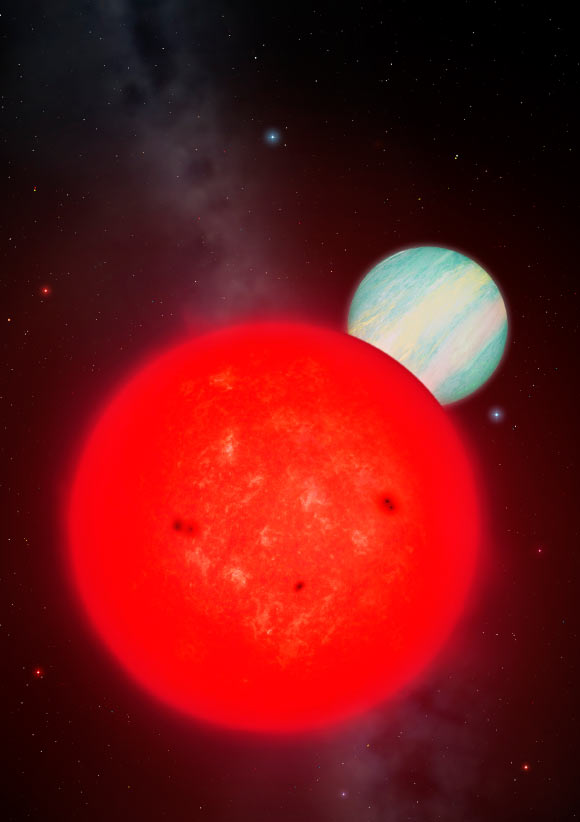Physicists from the Muon g-2 experiment have released their third measurement of the muon magnetic anomaly. The final result agrees with their published results from 2021 and 2023 but with a much better precision of 127 parts-per-billion, surpassing the original experimental design goal of 140 parts-per-billion.

A muon particle passing through lead in a cloud chamber. Image credit: Jino John 1996 / CC BY-SA 4.0.
The Muon g-2 experiment looks at the wobble of a fundamental particle called the muon.
Muons are similar to electrons but about 200 times more massive; like electrons, muons have a quantum mechanical property called spin that can be interpreted as a tiny internal magnet.
In the presence of an external magnetic field, the internal magnet will wobble — or precess — like the axis of a spinning top.
The precession speed in a magnetic field depends on properties of the muon described by a number called the g-factor.
Theoretical physicists calculate the g-factor based on the current knowledge of how the Universe works at a fundamental level, which is contained in the Standard Model of particle physics.
Nearly 100 years ago, the value of g was predicted to be 2. But experimental measurements soon showed g to be slightly different from 2 by a quantity known as the magnetic anomaly of the muon, aμ, calculated with (g-2)/2. The Muon g-2 experiment gets its name from this relation.
The muon magnetic anomaly encodes the effects of all Standard Model particles, and theoretical physicists can calculate these contributions to an incredible precision.
But previous measurements taken at Brookhaven National Laboratory in the 1990s and 2000s showed a possible discrepancy with the theoretical calculation at that time.
When experiment doesn’t align with theory, it could indicate new physics.
Specifically, physicists wondered if this discrepancy could be caused by as-yet undiscovered particles pulling at the muon’s precession.
So physicists decided to upgrade the Muon g-2 experiment to make a more precise measurement.
In 2013, Brookhaven’s magnetic storage ring was transported from Long Island, New York, to Fermilab in Batavia, Illinois.
After years of significant upgrades and improvements, the Fermilab Muon g-2 experiment started up on May 31, 2017.
In parallel, an international collaboration of theorists formed the Muon g-2 Theory Initiative to improve the theoretical calculation.
In 2020, the Theory Initiative published an updated, more precise Standard Model value based on a technique that uses input data from other experiments.
The discrepancy with the result from that technique continued to grow in 2021 when Fermilab announced its first experimental result, confirming the Brookhaven result with a slightly improved precision.
At the same time, a new theoretical prediction came out based on a second technique that heavily relies on computational power.
This new number was closer to the experimental measurement, narrowing the discrepancy.
Recently, the Theory Initiative published a new prediction combining the results of several groups that used the new computational technique.
This result remains closer to the experimental measurement, dampening the possibility of new physics.
However, the theoretical effort will continue to work to understand the discrepancy between the data-driven and computational approaches.
The latest experimental value of the magnetic moment of the muon from the Fermilab experiment is:
aμ = (g-2)/2 (muon, experiment) = 0.001 165 920 705
This final measurement is based on the analysis of the last three years of data, taken between 2021 and 2023, combined with the previously published datasets.
This more than tripled the size of the dataset used for their second result in 2023, and it enabled the collaboration to finally achieve their precision goal proposed in 2012.
It also represents an analysis of the experiment’s best-quality data.
Toward the end of their second data-taking run, the Muon g-2 Collaboration finished tweaks and enhancements to the experiment that improved the quality of the muon beam and reduced uncertainties.
“The anomalous magnetic moment, or g-2, of the muon is important because it provides a sensitive test of the Standard Model of particle physics,” said Regina Rameika, U.S. Department of Energy’s Associate Director for the Office of High Energy Physics.
“This is an exciting result and it is great to see an experiment come to a definitive end with a precision measurement.”
“This long-awaited result is a tremendous achievement of precision and will remain the world’s most precise measurement of the muon magnetic anomaly for many years to come.”
“Despite recent challenges with the theoretical predictions that reduce evidence of new physics from muon g-2, this result provides a stringent benchmark for proposed extensions of the Standard Model of particle physics.”
“This is a very exciting moment because we not only achieved our goals but exceeded them, which is not very easy for these precision measurements,” said Dr. Peter Winter, a physicist at Argonne National Laboratory and co-spokesperson for the Muon g-2 Collaboration.
“With the support of the funding agencies and the host lab, Fermilab, it has been very successful overall, as we reached or surpassed pretty much all the items that we were aiming for.”
“For over a century, g-2 has been teaching us a lot about the nature of nature,” said Cornell University’s Professor Lawrence Gibbons.
“It’s exciting to add a precise measurement that I think will stand for a long time.”
“As it has been for decades, the magnetic moment of the muon continues to be a stringent benchmark of the Standard Model,” said Dr. Simon Corrodi, a physicist at Argonne National Laboratory.
“The new experimental result sheds new light on this fundamental theory and will set the benchmark for any new theoretical calculation to come.”
The new results will appear in the journal Physical Review Letters.






















